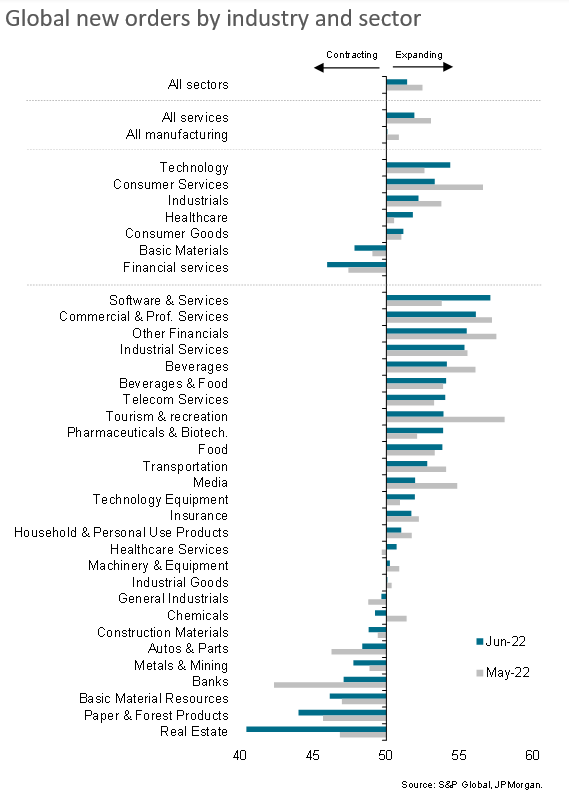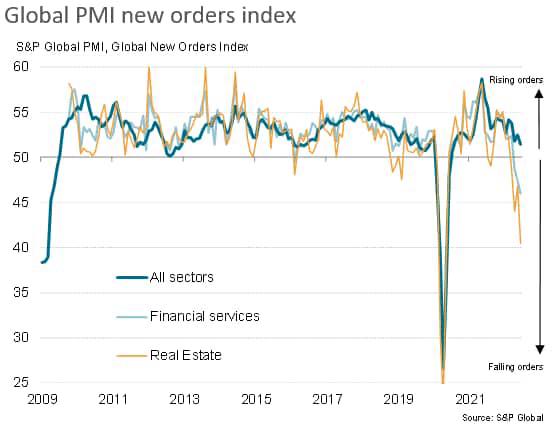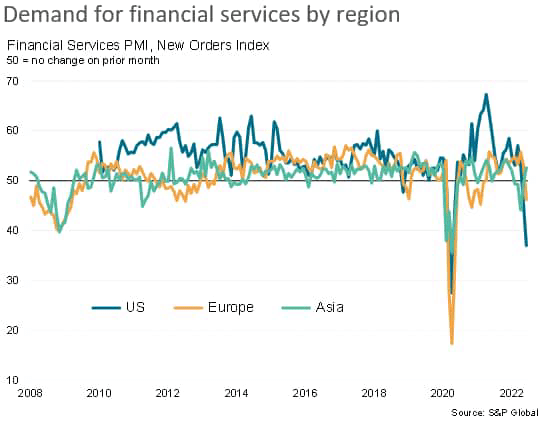fatido/iStock via Getty Images
Detailed sector PMI data compiled by S&P Global, derived from information provided by panels of over 30,000 companies in 45 countries, reveals demand falling in nine of the 26 detailed sectors covered by the surveys, with by far the steepest contraction recorded for real estate amid tightening financial conditions and the rising cost of living.
Author
New orders placed for goods and services rose worldwide in June at the slowest rate for nearly two years, according to S&P Global’s PMI survey data, registering only a modest expansion of demand during the month. A breakdown of the data revealed that the slowdown was led by a sharp drop in orders for financial services, and for real estate activities in particular.
New orders for financial services in fact fell for a third successive month in June, with the latest decline the steepest recorded since May 2020.
The real estate segment of financial services meanwhile saw new orders fall for a fourth straight month in June, with the rate of reduction also running at the steepest since May 2020.
To underscore the severity of the latest drop in demand for financial services and real estate, in particular, barring the pandemic shutdowns of early 2020, these latest declines are far greater than any downturns seen since comparable PMI data at the sector level were available in late 2009.
Banking firms also saw new orders fall, dropping for the second month in a row, albeit at a reduced rate of contraction, thereby also marking the sector’s worse performance since the early pandemic business closures.
Author
Future prospects also look especially gloomy for financial services and notably for real estate. The PMI’s future expectations index, which measures anticipated business activity in the coming year, was the lowest seen in all industries and sub-sectors respectively for financial services and real estate.
New orders for financial services fell especially sharply in the US, down for the second month in a row and dropping at a rate exceeded since 2009 only by the drop recorded in April 2020.
In Europe, the financial service sector’s new orders fell for the first time since March 2021, with real estate new business inflows dropping for a second month and at an accelerated rate.
In Asia, in contrast, financial services firms reported a rise in new orders for the first time since January, largely reflecting a reopening of the economy in mainland China, though real estate new work fell for a sixth successive month, albeit with the rate of decline easing.
While the divergence in demand for financial services between Asia and the west in part reflects the recent reopening of parts of the Chinese economy since the easing of the Omicron wave, the downturn in demand in the US and Europe also reflects rising interest rates and tightening financial conditions more generally in these economies, according to anecdotal evidence provided by PMI survey contributors.
Author
Editor’s Note: The summary bullets for this article were chosen by Seeking Alpha editors.


Be the first to comment